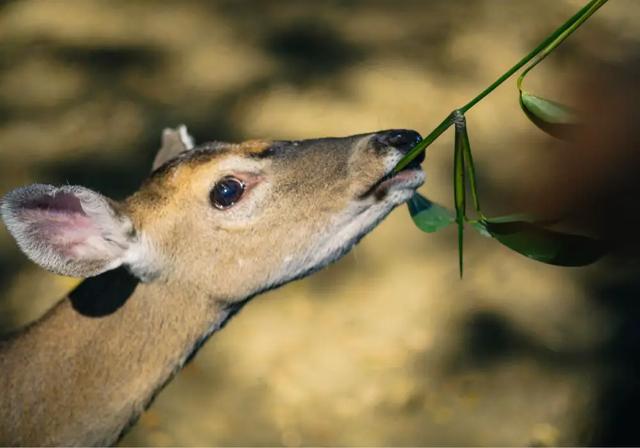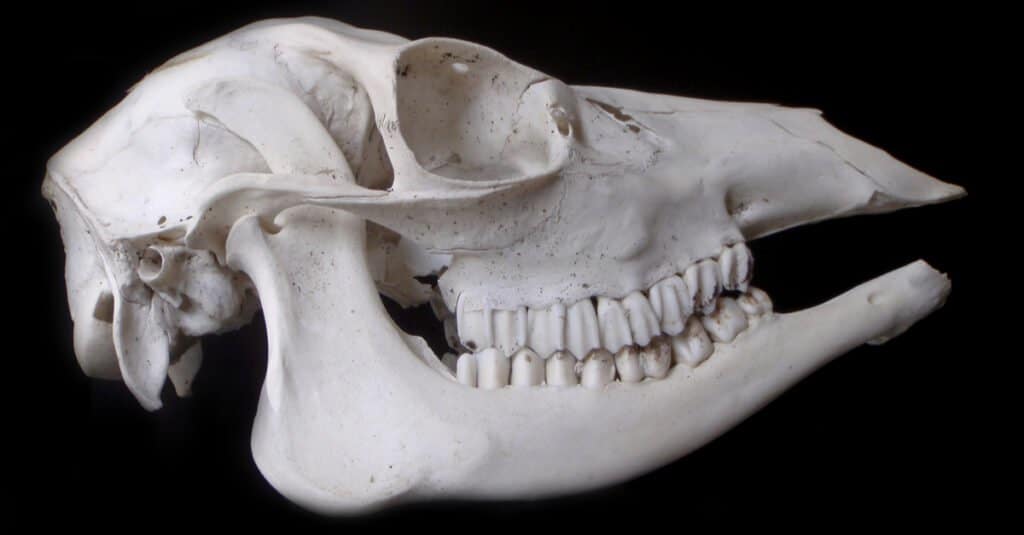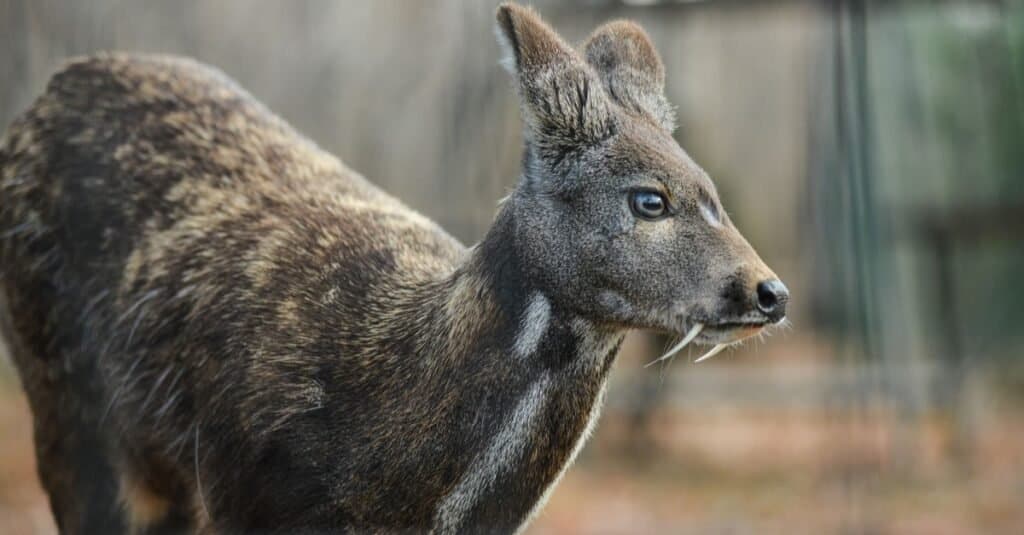“Do deer have teeth? Exploring the dental anatomy of these majestic creatures. Discover the surprising truth behind the eating habits and dental structures of deer species, shedding light on their unique adaptations for survival in the wild.”
1. “Do Deer Have Teeth? Exploring the Dental Anatomy of Deer”

Deer, like all mammals, have teeth that play a crucial role in their survival and overall health. However, the dental anatomy of deer differs from that of humans and other animals in several ways.
Dental Structure
Deer have a set of specialized teeth that are adapted to their herbivorous diet. The most prominent teeth in a deer’s mouth are its incisors, which are located at the front of the mouth. These incisors help the deer grasp and tear vegetation while feeding. Unlike humans, deer do not have top incisors; instead, they only have bottom incisors.
In addition to incisors, deer also possess premolars and molars. These teeth are located towards the back of the mouth and are responsible for grinding down plant material before it is swallowed.
Tooth Replacement
One interesting aspect of deer dental anatomy is their tooth replacement process. Like many other mammals, deer have deciduous or baby teeth that are eventually replaced by permanent adult teeth.
The timing of tooth replacement can vary among different species of deer and even among individuals within a species. Generally, fawns begin to shed their deciduous teeth at around 6-8 months old, with permanent teeth fully erupting by 1-1.5 years old.
Dental Aging Techniques
Examining a deer’s jawbone is an effective method for determining its age based on tooth wear and eruption patterns. Wildlife biologists and hunters often use this technique to estimate the age structure of a deer population.
By examining the wear on premolars and molars as well as observing tooth eruption patterns, experts can estimate the age of a harvested or captured deer with reasonable accuracy. This information is valuable for wildlife management purposes as it provides insights into population dynamics and overall health.
In conclusion, deer do have teeth, and their dental anatomy is specifically adapted to their herbivorous diet. Understanding the dental structure and tooth replacement process of deer can provide valuable insights into their age and overall health, contributing to effective wildlife management strategies.
2. “Unveiling the Mystery: Discovering the Teeth of Deer”
Deer teeth serve as a fascinating window into the life and age of these majestic creatures. By examining their teeth, wildlife experts and researchers can uncover valuable information about a deer’s diet, health, and overall lifespan. The dental structure of deer consists of incisors, canines, premolars, and molars, each serving a specific purpose in their feeding habits.
The Incisors
The incisors are located at the front of a deer’s mouth and are responsible for grasping and tearing vegetation. Unlike humans, deer do not have top incisors, only bottom ones. These teeth are sharp and enable the deer to efficiently strip leaves from branches or graze on grasses.
The Canines
Deer canines are often referred to as “tusks” due to their elongated appearance in some species. The presence of upper canine teeth is relatively rare in deer but can occasionally be found in certain individuals. These canines play no role in feeding but may be used for combat during mating season or territorial disputes.
The Premolars and Molars
Premolars and molars are located towards the back of a deer’s mouth and are responsible for grinding down food into smaller pieces that can be easily digested. These teeth have flat surfaces with ridges known as cusps, which aid in breaking down tough plant materials such as twigs or acorns.
Understanding the aging process of deer through their teeth is crucial for wildlife management efforts. By examining wear patterns on the premolars and molars, experts can estimate the age of a deer with reasonable accuracy. Younger deer will have sharp cusps with little wear, while older individuals will exhibit more rounded cusps due to years of chewing abrasive vegetation.
In conclusion, delving into the world of deer teeth reveals a wealth of information about these remarkable animals. From their incisors for grasping to their premolars and molars for grinding, each tooth has a specific role in a deer’s survival. By studying the teeth, researchers can gain insights into diet, health, and age, aiding in effective wildlife management strategies.
3. “Jaw-dropping Facts: Understanding the Tooth Structure of Deer”

Deer have a unique tooth structure that is specialized for their herbivorous diet. Their teeth are designed to help them efficiently chew and grind plant material, such as leaves, twigs, and grass.
Tooth Types:
Deer have two main types of teeth: incisors and molars. The incisors are located at the front of the mouth and are used for cutting vegetation. They are sharp and pointed, allowing deer to easily nip off leaves and stems. The molars, on the other hand, are located towards the back of the mouth and are used for grinding food. They have flat surfaces with ridges called cusps, which help break down tough plant material.
Tooth Replacement:
One interesting fact about deer teeth is that they continuously grow throughout their lives. This is because their teeth undergo a process called tooth replacement. As deer wear down their teeth from chewing abrasive plant material, new teeth continuously grow in to replace the worn ones. This ensures that deer always have functional teeth for feeding.
No Upper Incisors:
Unlike humans and many other mammals, deer do not have upper incisors or canines in their mouths. Instead, they rely solely on their lower incisors to bite off vegetation. This unique dental adaptation allows them to graze more efficiently without damaging their upper gums or lips.
In conclusion, understanding the tooth structure of deer provides insights into how these animals have evolved to thrive on a herbivorous diet. Their specialized incisors and molars enable them to effectively process plant material while continuously replacing worn teeth throughout their lives. The absence of upper incisors further showcases their unique dental adaptation for efficient grazing.
4. “Tooth Tales: Unraveling the Enigma of Deer’s Dental Health”

The Importance of Deer’s Dental Health
Deer’s dental health plays a crucial role in their overall well-being. Just like humans, deer rely on their teeth for various functions such as eating, grooming, and defending themselves. Understanding the dental health of deer is essential for wildlife management and conservation efforts. By examining the condition of a deer’s teeth, experts can gather valuable information about its age, nutrition, and overall health.
Types of Teeth in Deer
Deer have a unique set of teeth that differ from other mammals. They possess a combination of molars, premolars, incisors, and canine teeth. However, one interesting fact about deer is that they lack upper incisors or front teeth. This evolutionary adaptation allows them to efficiently graze on vegetation without damaging their mouths or injuring themselves while feeding.
Aging Deer through Their Teeth
One fascinating aspect of deer’s dental health is how it can be used to determine their age. By examining the wear and growth patterns of their teeth, wildlife experts can estimate the age of a deer with reasonable accuracy. Younger deer tend to have smoother and sharper tooth surfaces, while older individuals may exhibit more worn-down teeth with visible signs of aging.
Maintaining Dental Health in Deer
Ensuring good dental health is vital for maintaining healthy populations of deer in the wild. Proper nutrition plays a significant role in promoting strong teeth growth and preventing dental issues such as tooth decay or malocclusion. Wildlife managers often implement habitat management practices that provide diverse food sources rich in nutrients to support optimal dental health in deer populations.
In conclusion, understanding and monitoring the dental health of deer is crucial for effective wildlife management and conservation efforts. By unraveling the enigma of deer’s dental health through age determination and studying their unique teeth structure, experts can gain valuable insights into the overall well-being of these magnificent animals.
5. “Deer Dentistry 101: Examining the Presence and Purpose of Teeth in Deer”
Deer dentistry, or the study of deer teeth, is an important aspect of understanding the age and health of these animals. By examining the presence and purpose of teeth in deer, researchers and wildlife biologists can gain valuable insights into their diet, behavior, and overall well-being.
The Different Types of Teeth
Deer have a unique dental structure that consists of a combination of incisors, canines, premolars, and molars. The number and arrangement of these teeth vary depending on the species and age of the deer.
The incisors are located at the front of the mouth and are used for cutting vegetation. Canines are present in some species but are often small and not as prominent as those found in carnivorous animals. Premolars are used for grinding food, while molars play a similar role but are larger in size.
It is interesting to note that deer do not have top front teeth, also known as upper incisors. Instead, they have a tough gum pad that helps them grip and tear vegetation more efficiently.
Aging Deer by Examining Their Teeth
One of the main purposes of studying deer teeth is to determine their age accurately. As deer grow older, their teeth go through various stages of wear and tear due to their diet and natural aging process.
By examining the wear patterns, tooth eruption sequence, and tooth replacement patterns in a deer’s jawbone, experts can estimate its age with reasonable accuracy. This information is crucial for wildlife management practices such as setting hunting regulations or monitoring population dynamics.
In addition to age determination, studying deer teeth can provide insights into their nutritional status. For example, malocclusion or misalignment of teeth can indicate poor nutrition or other health issues affecting the animal’s ability to chew and digest food properly.
Understanding the presence and purpose of teeth in deer is essential for wildlife researchers, hunters, and conservationists alike. By examining these dental structures, valuable information can be obtained about the age, diet, and overall health of these magnificent animals.
6. “Beyond Antlers: Delving into the Dental Secrets of Deer”
Deer are fascinating creatures, known for their majestic antlers and graceful movements. However, there is much more to these animals than meets the eye. One aspect that often goes unnoticed is their dental structure and how it can provide valuable insights into their age and overall health.
The Importance of Deer Teeth
Deer teeth play a crucial role in their survival and well-being. Like humans, deer have two sets of teeth throughout their lives – deciduous (baby) teeth and permanent teeth. By examining the condition of these teeth, experts can determine the age of a deer with relative accuracy.
The first set of baby teeth appears when fawns are around three to four weeks old. These milk teeth are small and sharp, enabling them to consume vegetation as they transition from mother’s milk to solid food. As the fawn grows, these deciduous teeth will be replaced by permanent ones, which are larger and more durable.
Dental Wear as an Age Indicator
One way to estimate a deer’s age is by examining the wear on its molars. Just like humans, deer use their back teeth for grinding food before swallowing it. Over time, this constant chewing causes the enamel on their molars to wear down, creating distinct patterns that can be used for aging purposes.
By closely analyzing the degree of tooth wear and comparing it with known age specimens, wildlife biologists can estimate a deer’s age within a certain range. This information is vital for managing deer populations and making informed decisions regarding hunting regulations.
Other Dental Anomalies
While tooth wear is a reliable indicator of age in most cases, there are instances where other dental anomalies may complicate the process. For example, some deer may lose or break their incisors or canine teeth due to injuries or genetic factors. This can make age determination more challenging, but it is still possible to estimate their age based on the wear of remaining teeth.
Additionally, dental problems such as abscesses or infections can affect a deer’s overall health and survival. These issues can be identified through dental examinations, allowing wildlife professionals to intervene and provide necessary treatment if needed.
In conclusion, beyond their impressive antlers, deer possess a fascinating dental structure that holds valuable information about their age and well-being. By examining their teeth and analyzing patterns of wear, experts can gain insights into population dynamics and make informed management decisions. Understanding the dental secrets of deer adds another layer of appreciation for these magnificent creatures and highlights the importance of conservation efforts to ensure their continued existence in our natural world.
In conclusion, deer do have teeth, but they are primarily used for eating vegetation rather than tearing or biting. Their dental structure allows them to efficiently consume their herbivorous diet and adapt to different types of plants. While their teeth may not be as prominent as those of carnivores, they play a vital role in the deer’s overall digestive process.












